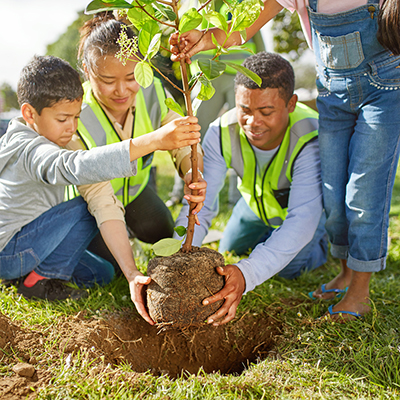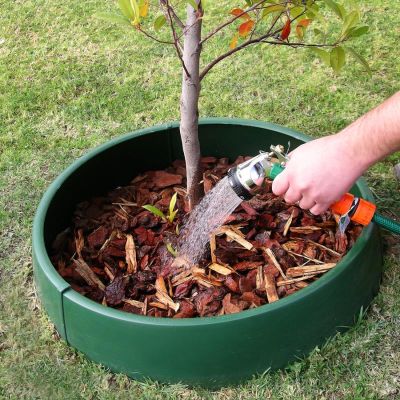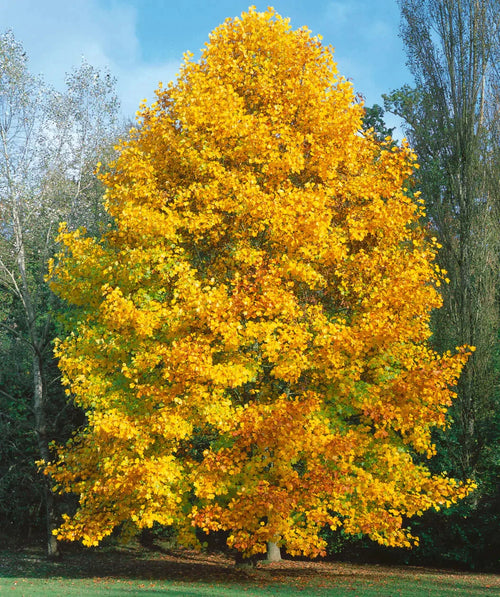A Comprehensive Guide on How to Plant a Tree: Cultivating Life and Sustaining Nature
Planting a tree is not merely an act of landscaping; it's a profound commitment to the health of our environment and the future of our planet. Trees are the earth's lungs, providing oxygen, absorbing carbon dioxide, and supporting biodiversity. However, planting a tree is more than just unearthing a spot and placing a sapling; it requires careful planning, consideration, and proper technique to ensure the tree's successful establishment and long-term health. This comprehensive guide will delve into the step-by-step process of planting a tree, from selecting the suitable species to nurturing it through its growth stages.
Choosing the Right Tree
The foremost step in cultivating a tree is selecting the suitable species for your location and purpose. Consider factors like climate, soil type, available space, and desired benefits like shade, fruit production, or aesthetic appeal. Research native species that are well-adapted to your region's climate and soil conditions, as they are better likely to succeed and need less maintenance.
Site Preparation To How to Plant a Tree

Before planting, it's essential to prepare the planting site properly. Start by clearing away any grass, weeds, or debris from the area where the tree will be planted. This will lower the rival for nutrients and water and give the tree a better chance to establish itself. Next, loosen the soil in the planting area to improve aeration and drainage. You can use a shovel or a plower to break up packed soil and terminate any rocks or roots that may impede root growth.
Digging the Hole:
The length and deepness of the planting hole are crucial for the tree's root development. Generally, the planting hole should be two to three times more expansive than the tree's root ball and slightly shallower than the root ball's depth. Avoid digging the hole too deep, as this can cause the tree to settle too low in the ground, leading to drainage problems and root suffocation.
Handling the Tree:
When handling the tree, it's essential to treat the roots and trunk carefully to avoid damaging them. If the tree is in a receptacle, gently extract it from the pot carefully so as not to disturb the roots excessively. If the tree is bare-root, inspect the roots for any damage or signs of disease before planting. Control the tree by the root or container rather than the trunk to prevent injury to the delicate tissues.
Placing the Tree For How to Plant a Tree
Carefully place the tree in the center of the planting hole, providing the top of the root is tied with the surrounding soil. Avoid planting the tree too deep, which can suffocate the roots and hinder growth. If necessary, you can add or remove soil from the bottom of the hole to achieve the proper planting depth.
Backfilling the Hole:
Once you have positioned the tree in the planting hole, it is essential to backfill it with the soil you removed earlier. This will help to ensure that the tree is securely anchored in the ground and has entry to the nutrients it requires to grow.
As you backfill the hole, it is essential to pat down the soil to release any air pockets that may have formed. This will help to ensure good soil-to-root contact, which is critical for the tree's health and growth.
However, avoiding packing the soil too tightly is essential, as this can restrict root growth and water infiltration. Instead, it would help if you aimed to achieve a balance between compacting the soil enough to remove air pockets while still allowing enough space for the roots to grow and for water to penetrate the soil.
By following these steps, you can help ensure your tree has the best chance of thriving in its new home.
Watering and Mulching:
When you plant a tree, water it well to help the soil settle around the roots and reduce transplant shock. Use a steady, slow stream of water to ensure it reaches deep into the roots. Once you've watered the tree, put a layer of mulch around the base. Mulch helps to keep the soil moist, block weeds, and regulate the temperature.
Staking and Support For How to Plant a Tree

When planting young trees, it's essential to remember that some trees may require staking or support to prevent them from leaning or being damaged by wind. Before staking, it's necessary to ensure the tree is planted securely in the ground. It should be produced at the correct depth, and the soil should be packed tightly around the root ball to provide stability.
If staking is necessary, using soft materials such as tree straps or fabric ties is essential to avoid damaging the trunk. Rigid materials such as wire or rope may cause harm to the bark, which can lead to disease or insect infestation. The stakes should be placed outside the root ball, about 1-2 feet from the trunk. This will allow the tree to sway and move naturally, essential for developing a robust root system.
When attaching the stakes, it's essential to do so loosely. This will allow the tree to move and sway naturally, encouraging the development of a strong trunk and root system. If the stakes are too tight, the tree may not develop the necessary strength to withstand wind and other environmental factors.
In summary, if staking is necessary, it's essential to do it correctly to ensure the continued health and growth of the tree. Use soft materials, place the stakes outside the root ball, and attach them loosely to allow for natural movement and sway. With proper staking, your newly planted tree will be well on its way to becoming a healthy and beautiful addition to your landscape.

Caring for the Tree:
Planting a tree is just the beginning of its journey to maturity. To ensure its long-term health and vitality, it's essential to provide ongoing care and maintenance. Monitor the tree regularly for indications of strain, disease, or pest infestation, and take proper action.
Cultivating a tree is an effortless yet effective act that has far-reaching benefits for our environment and future generations. Following the steps outlined in this guide and delivering proper care and attention, you can help cultivate life, support biodiversity, and contribute to a healthier, more sustainable planet.
TN Nursery offers helpful video's on how to plant trees and shrubs.



















































